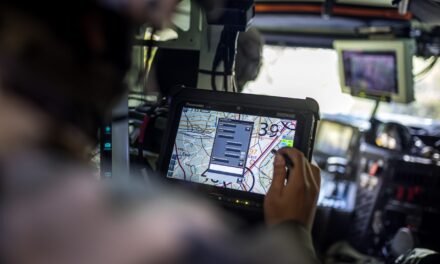Emerging technologies in missile defense systems are transforming the way nations address modern missile threats, including hypersonic weapons, ballistic missiles, cruise missiles, and drones. These advanced technologies aim to enhance detection, tracking, interception, and overall operational effectiveness. Here are the key emerging technologies in missile defense systems:
1. Hypersonic Defense Systems
- Tracking and Interception Technologies:
- Development of sensors and interceptors capable of detecting, tracking, and engaging hypersonic missiles traveling at speeds exceeding Mach 5.
- Advanced radar systems and infrared sensors that can predict the unpredictable trajectories of hypersonic glide vehicles.
- Directed Energy Weapons (DEWs):
- High-energy lasers and microwave weapons capable of neutralizing hypersonic threats by damaging or disrupting their electronic systems.
- These systems offer precise targeting with minimal collateral damage.
2. Advanced Radar and Sensor Systems
- Over-the-Horizon Radars (OTHR):
- Long-range radars that can detect missile launches and track them early in their trajectory.
- Phased-Array Radars:
- Rapidly scanning radars that can track multiple targets simultaneously with high resolution.
- Multi-Spectral Sensors:
- Combining radar, infrared, and optical data to improve tracking accuracy, even in complex environments.
3. Artificial Intelligence (AI) and Machine Learning (ML)
- Real-Time Threat Analysis:
- AI-driven algorithms process vast amounts of data from sensors to identify and classify missile threats more rapidly and accurately.
- Predictive Targeting:
- ML models forecast missile trajectories, enabling more effective interception.
- Autonomous Defense Systems:
- AI enables automated decision-making for interception, reducing response times in high-pressure scenarios.
4. Directed Energy Weapons (DEWs)
- High-Energy Lasers:
- Capable of intercepting missiles and drones by heating and destroying their critical components.
- Offer unlimited “ammunition” as long as power is available, making them cost-effective for sustained operations.
- High-Powered Microwave (HPM) Systems:
- Disrupt the electronics of incoming threats without physical destruction, ideal for countering drones and cruise missiles.
5. Space-Based Missile Defense
- Orbital Sensor Networks:
- Satellites equipped with infrared sensors to detect missile launches globally and provide early warning.
- Space-Based Interceptors:
- Hypothetical systems capable of engaging missiles during their boost phase while still ascending.
- Integration with Space Domain Awareness:
- Space surveillance systems track potential threats and enable coordinated responses.
6. Counter-Hypersonic Technologies
- Boost-Phase Interception:
- Systems designed to engage missiles during their initial powered flight, when they are slower and more vulnerable.
- Advanced Interceptors:
- Faster, more maneuverable interceptors tailored to counter hypersonic speeds and trajectories.
- Multi-Layered Defense:
- Combining different layers of missile defense (e.g., terminal, midcourse, boost-phase) for redundancy against hypersonic threats.
7. Network-Centric Missile Defense
- Integrated Air and Missile Defense (IAMD):
- Seamless coordination between different missile defense systems across land, sea, air, and space domains.
- Interoperability:
- Systems like the Patriot, THAAD, and Aegis integrate into a unified network to share data and improve response times.
8. Quantum Technologies
- Quantum Radar:
- Advanced radar systems leveraging quantum entanglement for detecting stealth and hypersonic missiles.
- Quantum Computing:
- Accelerates data processing for tracking and targeting complex missile threats.
9. Advanced Interceptors
- Hit-to-Kill Technology:
- Kinetic interceptors that destroy targets by direct impact, as seen in systems like THAAD and SM-3.
- Dual-Mode Interceptors:
- Interceptors combining kinetic impact with explosive warheads for higher reliability.
- Hypersonic Interceptors:
- Specialized interceptors capable of matching the speed and agility of hypersonic missiles.
10. Drone-Based Missile Defense
- Interceptor Drones:
- Autonomous drones equipped with advanced sensors and weapons to engage missiles mid-flight.
- Swarm Defense:
- Using drone swarms to overwhelm and neutralize incoming threats.
11. Cyber Defense Integration
- Electronic Warfare (EW):
- Countering missile systems by disrupting their guidance and communication systems.
- Cybersecurity:
- Protecting missile defense networks from cyberattacks that could disable or misdirect systems.
12. Multi-Layered Defense Architecture
- Boost Phase: Engaging missiles during their initial powered ascent with directed energy or interceptors.
- Midcourse Phase: Using space-based and ground-based systems to intercept missiles during their flight in space.
- Terminal Phase: Deploying high-speed interceptors and lasers to engage missiles in the final seconds before impact.
13. Compact and Mobile Systems
- Truck-Mounted Lasers and Radars:
- Mobile platforms capable of rapid deployment to counter threats in dynamic combat environments.
- Man-Portable Air Defense Systems (MANPADS):
- Compact missile defense systems for frontline troops to counter low-altitude threats.
Strategic Advantages
- Enhanced early warning and real-time response capabilities.
- Cost-effective solutions like DEWs that reduce reliance on expensive interceptors.
- Better defense against asymmetric threats like drones and hypersonic weapons.
- Multi-domain integration for seamless operation across land, sea, air, and space.
In conclusion, emerging technologies are reshaping missile defense, enabling nations to address evolving threats with unprecedented precision, speed, and efficiency. These advancements contribute to creating a robust and resilient defense ecosystem.
Hashtags
#MissileDefense #DefenseTechnology #MissileDefenseSystems #AerospaceDefense #ModernWarfareTech #AdvancedDetectionAndTracking #MissileTracking #AdvancedRadarSystems #ISRTechnology #TargetAcquisitionTech #EarlyWarningSystems #MissileInterceptors #AntiMissileTechnology #CountermeasureSystems #PrecisionInterception #NextGenMissileDefense













